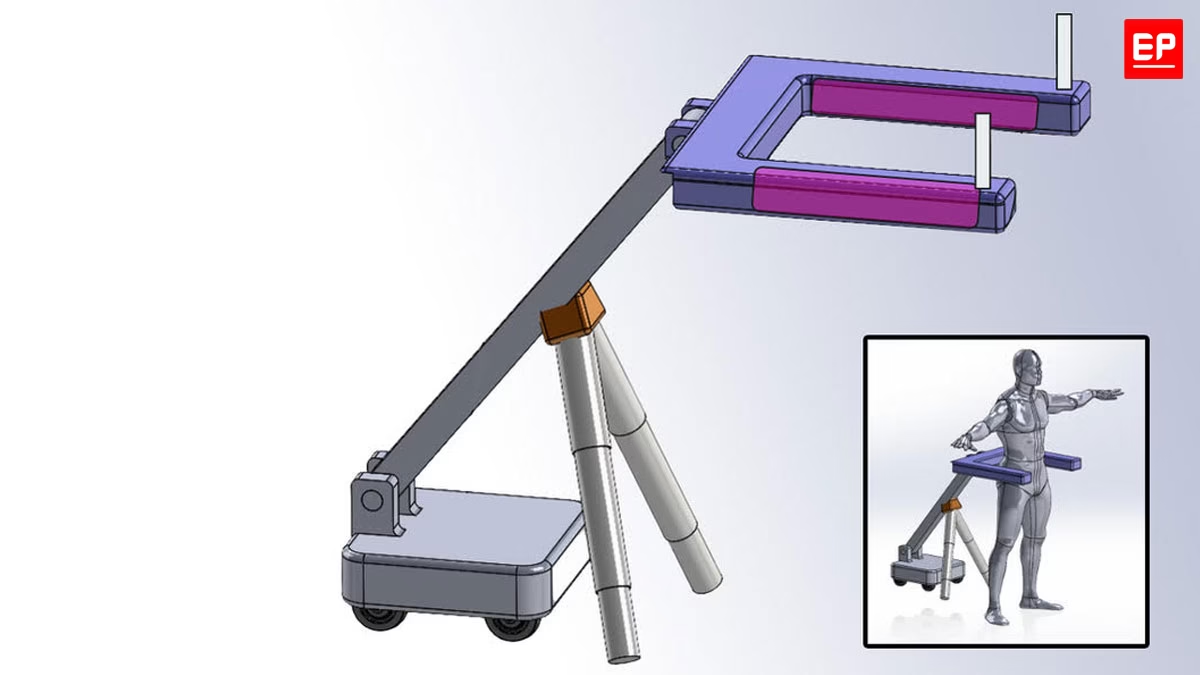Health
New Study Sheds Light on Life-Extending Impact of Kidney Transplants
The research finds that under the current U.S. kidney transplant system, recipients gain an average of 9.29 additional life-years

At any given time, approximately 100,000 people in the U.S. are on the waitlist for a kidney transplant, but only about one-fifth receive a new kidney each year, while others die waiting. A new study co-authored by an MIT economist adds fresh insight into this life-or-death issue, offering the most precise estimates yet of how kidney transplants extend patient lives—and how the current system might be optimized to save even more.
Published in the latest issue of Econometrica, the paper—“Choices and Outcomes in Assignment Mechanisms: The Allocation of Deceased Donor Kidneys”—is the work of Nikhil Agarwal, professor of economics at MIT; Charles Hodgson of Yale University; and Paulo Somaini of Stanford University.
“There’s always this question about how to take the scarce number of organs being donated and place them efficiently, and place them well,” said Agarwal, in a statement. He emphasized that the goal of the study is to inform, not advocate, contributing rigorous data to help shape future kidney allocation policies.
The research finds that under the current U.S. kidney transplant system, recipients gain an average of 9.29 additional life-years—a metric known as LYFT (life-years from transplantation). If kidneys were distributed randomly, that figure would fall to 7.54 years. However, by restructuring the matching system, the study estimates that the LYFT could reach as high as 14.08 years.
To reach these conclusions, the researchers used comprehensive data from the Organ Procurement and Transplantation Network, covering patients from 2000 to 2010, and tracked survival outcomes through February 2020. The study is the first of its kind to take a quasiexperimental approach, accounting for complexities such as patients’ health status and the choices they make when accepting transplant offers.
“The [previous] methodology of estimating what are the life-years benefits was not incorporating this selection issue,” said Agarwal. The study found that patients are more likely to accept kidneys from younger donors, those without hypertension, those who died from head trauma (often a sign of otherwise healthy organs), and donors with perfect tissue-type matches.
One key finding is that healthier patients tend to benefit more from transplants than sicker ones—a fact that could pose a challenge to current policies, which often prioritize patients who have spent the most time on the waitlist, or those in more dire health.
“You might think people who are the sickest and who are most likely to die without an organ are going to benefit the most from it [in added life-years],” Agarwal noted. “But there might be some other comorbidity or factor that made them sick, and their body’s going to take a toll on the new organ, so the benefits might not be as large.”
This creates a policy dilemma, as the researchers write: “Our results indicate … a dilemma rooted in the tension between these two goals”—maximizing life-years versus prioritizing the sickest patients.
Ultimately, Agarwal stresses that the study’s aim is not to advocate for a specific allocation model, but to provide tools for better policymaking. “I don’t necessarily think it’s my comparative advantage to make the ethical decisions,” he said, “but we can at least think about and quantify what some of the tradeoffs are.”
As the conversation around kidney transplant allocation continues, the study provides essential evidence to guide efforts in balancing ethics, efficiency, and patient outcomes.
Health
Teak Leaf Extract Emerges as Eco-Friendly Shield Against Harmful Laser Rays
Raman Research Institute scientists unlock sustainable alternative for laser safety in line with green tech goals

In a significant step toward sustainable photonic technologies, scientists from the Raman Research Institute (RRI), an autonomous institute under the Department of Science and Technology (DST), Government of India, have discovered that teak leaf extract can serve as an effective, natural shield against harmful laser radiation. This breakthrough offers new potential for protecting both sensitive optical sensors and human eyes from high-intensity lasers used in medical, industrial, and defense applications.
The team has found that the otherwise discarded leaves of the teak tree (Tectona grandis L.f) are rich in anthocyanins, natural pigments responsible for their reddish-brown colour. When exposed to light, these pigments exhibit nonlinear optical (NLO) properties, allowing them to absorb intense laser beams—a key feature required for laser safety gear.
The discovery, recently published in the Journal of Photochemistry and Photobiology A: Chemistry, proposes a non-toxic, biodegradable, and cost-effective alternative to conventional synthetic materials like graphene and metal nanoparticles, which are often expensive and environmentally hazardous.
“Teak leaves are a rich source of natural pigments such as anthocyanin… We explored the potential of teak leaf extract as an eco-friendly alternative to synthetic dyes in the field of nonlinear optics,” said Beryl C, DST Women Scientist at RRI, in a media statement issued by the government.
To extract this natural dye, researchers dried and powdered teak leaves, soaked them in solvents, and processed the mixture using ultrasonication and centrifugation. The resulting reddish-brown liquid was then tested with green laser beams under continuous and pulsed conditions.
Using advanced techniques like Z-scan and Spatial Self-Phase Modulation (SSPM), the dye demonstrated reverse saturable absorption (RSA)—a rare and desirable trait where the material absorbs more light as the intensity increases, effectively acting as a self-regulating shield against laser exposure.
This development is particularly crucial as laser technologies become increasingly prevalent in everyday environments—from surgical devices and industrial cutters to military-grade systems. By offering a natural and renewable solution to a global safety challenge, the RRI team has opened the door to a future of eco-conscious optical safety equipment, such as laser-resistant eyewear, coatings, and sensor shields.
Researchers also indicated that further studies will focus on enhancing the stability and commercial usability of the dye for long-term deployment.
This innovation aligns with the principles of Industry 5.0, emphasizing human-centered and environmentally responsible technology, and showcases how indigenous, sustainable resources can play a pivotal role in global tech solutions.
Health
PUPS – the AI tool that can predict where exactly proteins are in human cells
Dubbed, the Prediction of Unseen Proteins’ Subcellular Localization (or PUPS), the AI tool can account for the effects of protein mutations and cellular stress—key factors in disease progression.

Researchers from MIT, Harvard University, and the Broad Institute have unveiled a groundbreaking artificial intelligence tool that can accurately predict where proteins are located within any human cell, even if both the protein and cell line have never been studied before. The method – Prediction of Unseen Proteins’ Subcellular Localization (or PUPS) – marks a major advancement in biological research and could significantly streamline disease diagnosis and drug discovery.
Protein localization—the precise location of a protein within a cell—is key to understanding its function. Misplaced proteins are known to contribute to diseases like Alzheimer’s, cystic fibrosis, and cancer. However, identifying protein locations manually is expensive and slow, particularly given the vast number of proteins in a single cell.
The new technique leverages a protein language model and a sophisticated computer vision system. It produces a detailed image that highlights where the protein is likely to be located at the single-cell level, offering far more precise insights than many existing models, which average results across all cells of a given type.
“You could do these protein-localization experiments on a computer without having to touch any lab bench, hopefully saving yourself months of effort. While you would still need to verify the prediction, this technique could act like an initial screening of what to test for experimentally,” said Yitong Tseo, a graduate student in MIT’s Computational and Systems Biology program and co-lead author of the study, in a media statement.
Tseo’s co-lead author, Xinyi Zhang, emphasized the model’s ability to generalize: “Most other methods usually require you to have a stain of the protein first, so you’ve already seen it in your training data. Our approach is unique in that it can generalize across proteins and cell lines at the same time,” she said in a media statement.
PUPS was validated through laboratory experiments and shown to outperform baseline AI methods in predicting protein locations with greater accuracy. The tool is also capable of accounting for the effects of protein mutations and cellular stress—key factors in disease progression.
Published in Nature Methods, the research was led by senior authors Fei Chen of Harvard and the Broad Institute, and Caroline Uhler, the Andrew and Erna Viterbi Professor at MIT. Future goals include enabling PUPS to analyze protein interactions and make predictions in live human tissue rather than cultured cells.
Health
Robot Helps Elderly Sit, Stand, and Stay Safe from Falls
The innovation comes at a time when the United States faces a dramatic demographic shift

As America’s population ages faster than ever before, a team of engineers at MIT is turning to robotics to meet the growing eldercare crisis. Their latest invention, the Elderly Bodily Assistance Robot—or E-BAR—aims to provide critical physical support to seniors navigating life at home, potentially reducing the risk of injury and relieving pressure on a strained care system.
The innovation comes at a time when the United States faces a dramatic demographic shift. The nation’s median age has climbed to 38.9, nearly ten years older than in 1980. By 2050, the number of adults over 65 is projected to surge from 58 million to 82 million. As demand for care rises, the country is simultaneously grappling with shortages in care workers, escalating healthcare costs, and evolving family structures that leave many elderly adults without daily support.
“Eldercare is the next great challenge,” said Roberto Bolli, a graduate student in MIT’s Department of Mechanical Engineering and one of E-BAR’s lead designers, in a media statement. “All the demographic trends point to a shortage of caregivers, a surplus of elderly persons, and a strong desire for elderly persons to age in place.”
E-BAR is designed to address exactly that challenge. The mobile robot acts as a robotic support system, following a user from behind and offering both steadying handlebars and rapid intervention in case of a fall. It can support a person’s full weight and includes side airbags that inflate instantly to catch users if they begin to fall—without requiring them to wear any equipment or harnesses.
“Many older adults underestimate the risk of fall and refuse to use physical aids, which are cumbersome, while others overestimate the risk and may not exercise, leading to declining mobility,” said Harry Asada, the Ford Professor of Engineering at MIT, in a media statement. “Our design concept is to provide older adults having balance impairment with robotic handlebars for stabilizing their body. The handlebars go anywhere and provide support anytime, whenever they need.”
The robot consists of a heavy, 220-pound base equipped with omnidirectional wheels, allowing it to maneuver easily through typical home spaces. From its base, articulated bars extend and adjust to assist users in standing or sitting, and the handlebars provide a natural, unrestrictive grip. In testing, E-BAR successfully helped an older adult complete everyday movements such as bending, reaching, and even stepping over the edge of a bathtub.
“Seeing the technology used in real-life scenarios is really exciting,” said Bolli.
The team’s design, which will be presented later this month at the IEEE Conference on Robotics and Automation (ICRA), aims to eliminate the physical constraints and stigmas often associated with eldercare devices. Their approach prioritizes both independence and safety—key values for aging Americans seeking to remain in their homes longer.
While E-BAR currently operates via remote control, the team plans to add autonomous capabilities and streamline the device’s design for home and facility use. The researchers are also exploring ways to integrate fall-prediction algorithms, developed in a parallel project in Asada’s lab, to adapt robotic responses based on a user’s real-time risk level.
“Eldercare conditions can change every few weeks or months,” Asada noted. “We’d like to provide continuous and seamless support as a person’s disability or mobility changes with age.”
As the nation prepares for the realities of an aging population, MIT’s work offers a glimpse into a future where robotics play a central role in eldercare—enhancing both quality of life and personal dignity for millions of older adults.
-

 Society4 months ago
Society4 months agoStarliner crew challenge rhetoric, says they were never “stranded”
-

 Space & Physics3 months ago
Space & Physics3 months agoCould dark energy be a trick played by time?
-

 Earth4 months ago
Earth4 months agoHow IIT Kanpur is Paving the Way for a Solar-Powered Future in India’s Energy Transition
-

 Space & Physics3 months ago
Space & Physics3 months agoSunita Williams aged less in space due to time dilation
-

 Learning & Teaching4 months ago
Learning & Teaching4 months agoCanine Cognitive Abilities: Memory, Intelligence, and Human Interaction
-

 Earth2 months ago
Earth2 months ago122 Forests, 3.2 Million Trees: How One Man Built the World’s Largest Miyawaki Forest
-

 Society5 months ago
Society5 months agoSustainable Farming: The Microgreens Model from Kerala, South India
-

 Women In Science3 months ago
Women In Science3 months agoNeena Gupta: Shaping the Future of Algebraic Geometry























